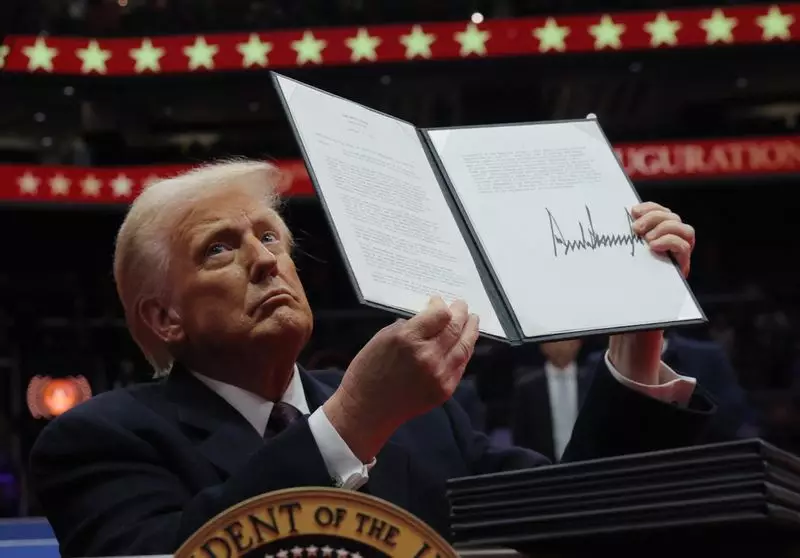In a significant move reflecting a shift towards traditional work environments, President Donald Trump recently signed an executive order that mandates federal employees return to their offices five days a week. This decision marks a stark deviation from the widespread remote work arrangements that were adopted during the COVID-19 pandemic. Trump’s announcement, made amidst a rally of enthusiastic supporters at Washington’s Capital One Arena, seems to reinforce his commitment to a pre-pandemic work culture.
The directive compels numerous white-collar government workers to relinquish the flexibility they enjoyed while working from home. Trump’s rationale appears to be twofold: restoring the conventional office atmosphere and potentially engaging in a broader strategy to reshape the federal workforce. According to allies of the President, this mandate is not only about revitalizing office work but may also serve as a method to systematically dismantle the existing civil service framework, facilitating the replacement of veteran government employees with more amicable counterparts.
Accompanying the return-to-office order is a comprehensive hiring freeze and the establishment of a new advisory body, the Department of Government Efficiency. This body is expected to spearhead efforts aimed at streamlining the federal government, which, critics suggest, could lead to the aggressive cutback or even complete dissolution of certain agencies. The implications of these changes are profound; experts warn that the combined effect of such policies might lead to a mass exodus of disillusioned government employees.
As the administration pushes for a full-scale return to the office, the potential for decreased morale among the workforce grows. Many employees have become accustomed to the work-from-home model, which has permitted greater work-life balance. Forcing a return could deepen resentment and frustration, resulting in a talent drain that undermines the very efficiency the administration aims to achieve. Indeed, Trump’s allies seem to view this as a desirable outcome, one that would strip the civil service of those they deem entrenched and resistant to change.
The ramifications of this executive order extend beyond mere workplace logistics. It raises fundamental questions about employee rights, workplace culture, and the broader dynamics of federal service. Critics contend that the mandate reflects a disinterest in employee welfare and could foster a climate of fear among government workers, concerned about job security and loyalty tests. The return-to-office policy may symbolize a broader effort to cultivate a government workforce aligned with Trump’s political objectives rather than one that prioritizes public service.
As various government agencies and departments scramble to comply with the new directives, the long-term impact on the federal workforce remains uncertain. Will this shift catalyze a drastic restructuring of the public sector, or will it simply lead to pushback and resistance from a workforce unwilling to compromise on hard-earned flexibility? For many, the outcome may hinge on how effectively the administration can navigate this complex intersection of policy, employee sentiment, and the evolving landscape of work in the post-pandemic world.

